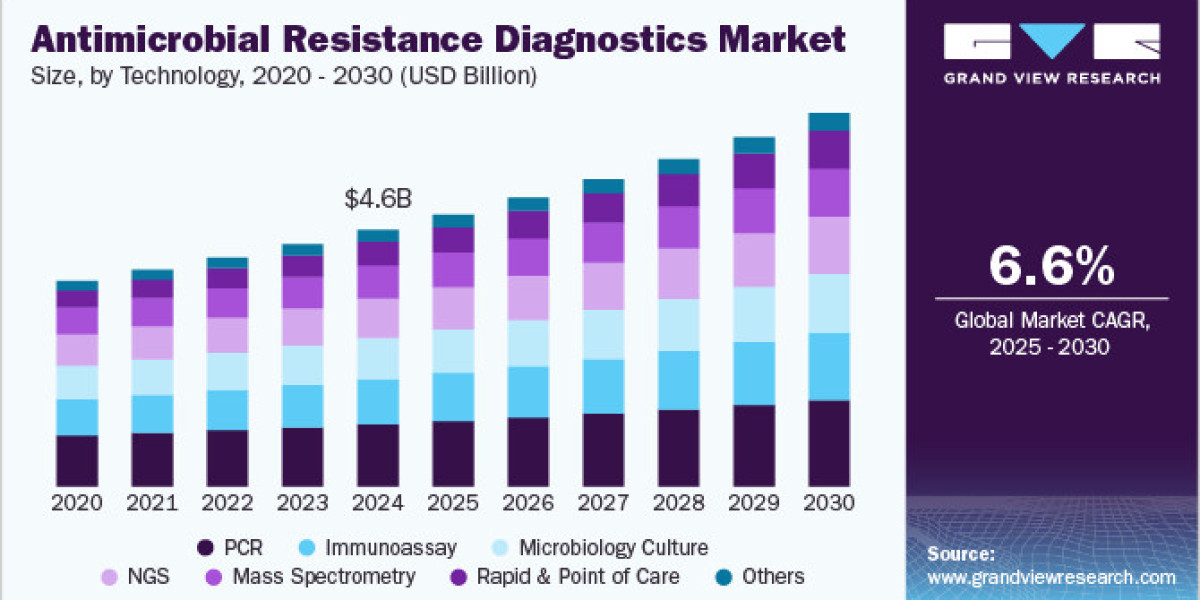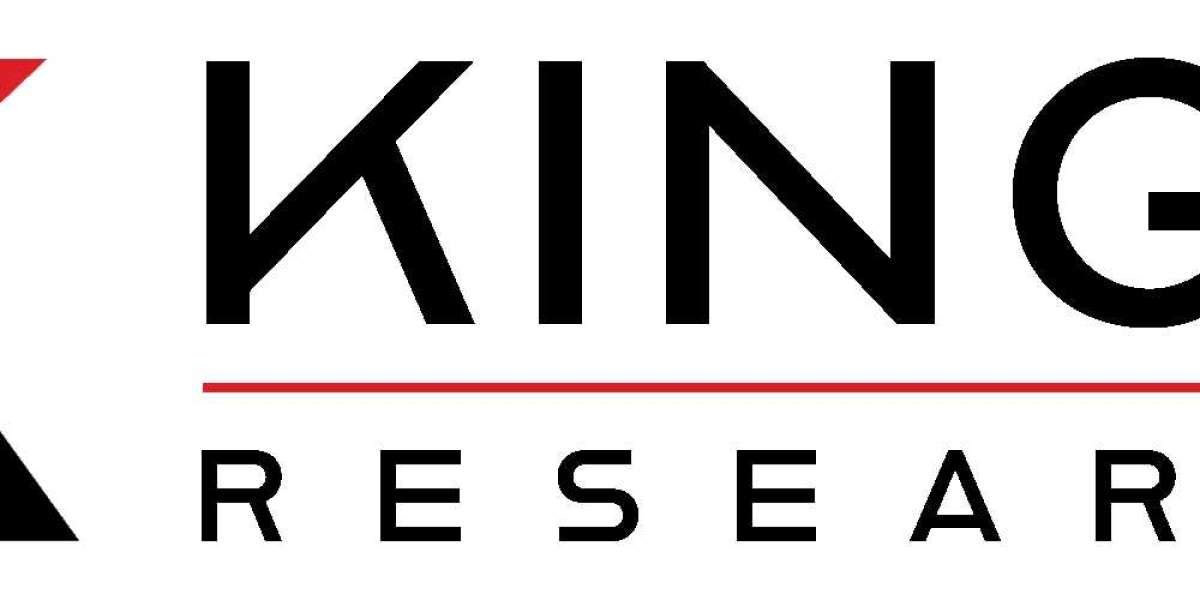The global antimicrobial resistance (AMR) diagnostics market was valued at USD 4.60 billion in 2024 and is projected to expand at a compound annual growth rate (CAGR) of 6.55% from 2025 to 2030. Market growth is primarily driven by the high prevalence of pathogens such as Streptococcus pneumoniae, MRSA, and Clostridioides difficile, along with a rising incidence of AMR infections. Additionally, growing demand for advanced diagnostic technologies and increasing regulatory approvals are accelerating market development. For instance, in September 2021, MeMed’s BV diagnostic test—designed to distinguish between bacterial and viral infections in point-of-care settings—received 510(k) clearance from the U.S. FDA.
The escalating threat posed by antimicrobial resistance continues to be a key market driver. According to the CDC, approximately 2.8 million AMR infections occur annually in the U.S., while the United States Pharmacopeial Convention estimates that AMR is responsible for around 700,000 deaths globally each year. Without effective diagnosis and treatment strategies, this number could rise to 10 million by 2050.
Governments around the world are taking active steps to improve diagnostic capabilities for more accurate and timely detection. For example, the UK government has launched multiple initiatives aimed at promoting R&D in AMR diagnostics. By 2024, the UK intends to address gaps in research and development, collaborate internationally to advance next-generation diagnostic tools, and support AMR-focused innovation. In February 2020, the UK partnered with Nigeria, investing approximately USD 12 million to strengthen laboratory infrastructure, enhance public health surveillance, and train healthcare personnel in combating drug-resistant infections.
Technology Insights
In 2024, the PCR segment led the market with the largest revenue share of 24.19%. The segment’s dominance is attributed to technological advancements and widespread adoption of PCR testing due to its high accuracy. The increased use of PCR assays for diagnosing healthcare-associated infections (HAIs), such as MRSA and C. difficile, further supports segment growth. Moreover, the presence of robust and innovative product lines from leading industry players continues to fuel demand. One notable example is Vela Diagnostics’ PathoKey MP UTI ID & AMR PCR Test, which detects genes responsible for AMR and urinary tract infections, covering resistance to five different antibiotic classes.
Pathogen Insights
Methicillin-resistant Staphylococcus aureus (MRSA) represented the largest share of the market by pathogen in 2024, accounting for 28.33%. The increasing prevalence of MRSA, particularly in healthcare environments, is a major contributor to this segment's growth. The CDC reports that about 33% of individuals carry Staphylococcus aureus in their nasal passages without symptoms, but approximately 2% develop MRSA infections. Rising regulatory approvals for MRSA-targeted diagnostics are also boosting segment performance. For example, in January 2020, the U.S. FDA approved an innovative MRSA test using bacteriophage-based technology. Additionally, the Cobas vivoDx MRSA test, cleared by the FDA, underscores the market’s shift toward next-generation diagnostic solutions.
Get a preview of the latest developments in the Global Antimicrobial Resistance Diagnostics Market! Download your FREE sample PDF today and explore key data and trends
End-use Insights
Hospitals dominated the market by end use in 2024, capturing 48.07% of the total revenue. The segment’s growth is driven by the increasing incidence of hospital-acquired infections (HAIs) and the rising number of AMR-related hospital admissions, which often lead to longer patient stays and increased demand for accurate diagnostics.
Regional Insights
North America led the global AMR diagnostics market in 2024, accounting for 42.03% of total revenue. This regional dominance is supported by several factors, including a higher prevalence of AMR, favorable government policies, and an advanced healthcare infrastructure. The presence of key market players and their ongoing strategic efforts are also expected to bolster market expansion in the region, fostering the development and adoption of cutting-edge AMR diagnostic technologies.
Key Players in the Antimicrobial Resistance Diagnostics Market
The following companies are recognized as leaders in the AMR diagnostics space, holding significant market share and shaping industry trends:
bioMérieux
F. Hoffmann-La Roche Ltd.
Abbott
Hologic, Inc.
BD
Danaher
Accelerate Diagnostics, Inc.
Molsid
Vela Diagnostics
Visby Medical, Inc.
OpGen
Gather more insights about the market drivers, restrains and growth of the Antimicrobial Resistance Diagnostics Market







